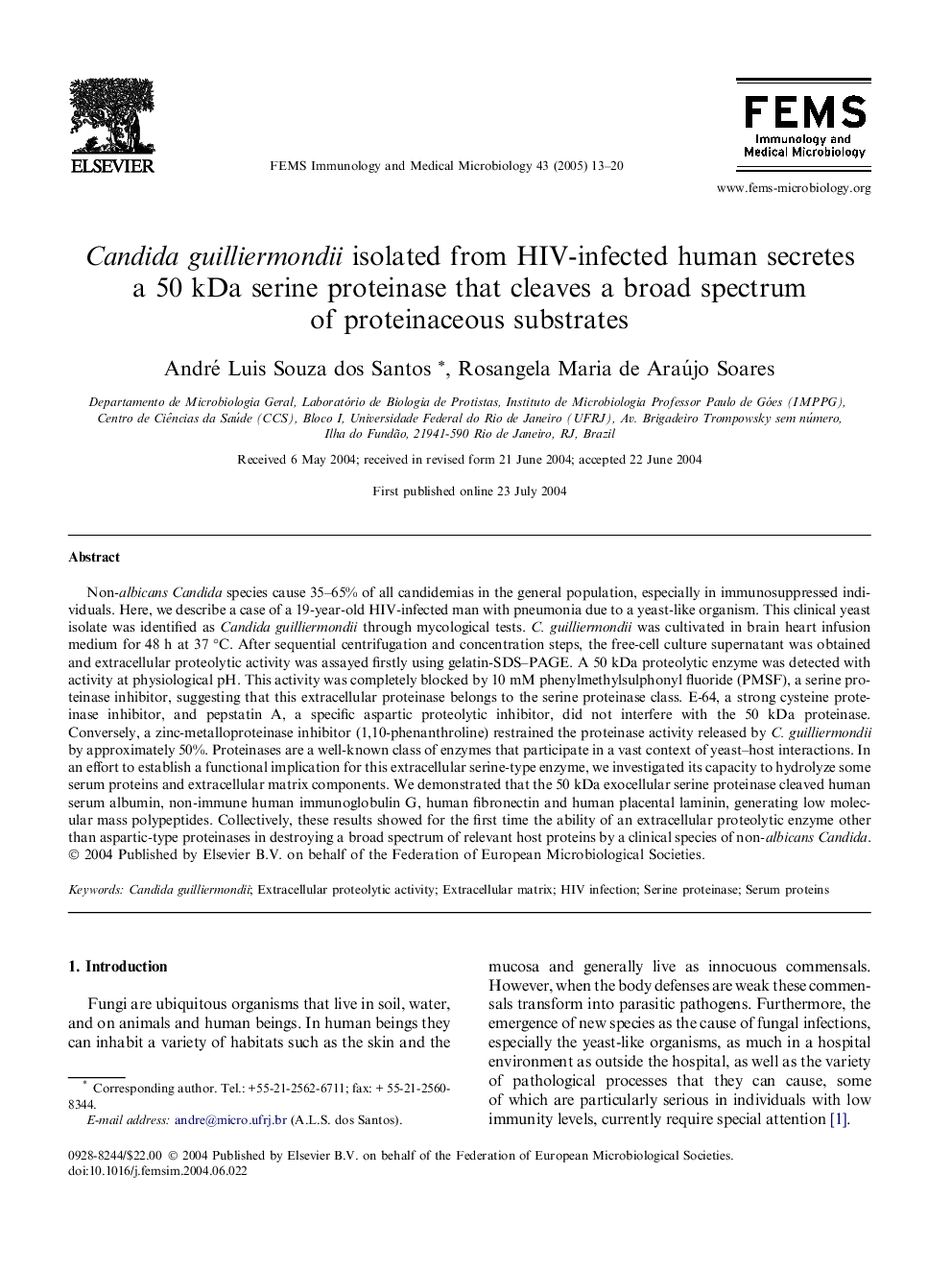| Article ID | Journal | Published Year | Pages | File Type |
|---|---|---|---|---|
| 9278107 | FEMS Immunology and Medical Microbiology | 2005 | 8 Pages |
Abstract
Non-albicans Candida species cause 35-65% of all candidemias in the general population, especially in immunosuppressed individuals. Here, we describe a case of a 19-year-old HIV-infected man with pneumonia due to a yeast-like organism. This clinical yeast isolate was identified as Candida guilliermondii through mycological tests. C. guilliermondii was cultivated in brain heart infusion medium for 48 h at 37 °C. After sequential centrifugation and concentration steps, the free-cell culture supernatant was obtained and extracellular proteolytic activity was assayed firstly using gelatin-SDS-PAGE. A 50 kDa proteolytic enzyme was detected with activity at physiological pH. This activity was completely blocked by 10 mM phenylmethylsulphonyl fluoride (PMSF), a serine proteinase inhibitor, suggesting that this extracellular proteinase belongs to the serine proteinase class. E-64, a strong cysteine proteinase inhibitor, and pepstatin A, a specific aspartic proteolytic inhibitor, did not interfere with the 50 kDa proteinase. Conversely, a zinc-metalloproteinase inhibitor (1,10-phenanthroline) restrained the proteinase activity released by C. guilliermondii by approximately 50%. Proteinases are a well-known class of enzymes that participate in a vast context of yeast-host interactions. In an effort to establish a functional implication for this extracellular serine-type enzyme, we investigated its capacity to hydrolyze some serum proteins and extracellular matrix components. We demonstrated that the 50 kDa exocellular serine proteinase cleaved human serum albumin, non-immune human immunoglobulin G, human fibronectin and human placental laminin, generating low molecular mass polypeptides. Collectively, these results showed for the first time the ability of an extracellular proteolytic enzyme other than aspartic-type proteinases in destroying a broad spectrum of relevant host proteins by a clinical species of non-albicans Candida.
Related Topics
Life Sciences
Immunology and Microbiology
Immunology
Authors
André Luis Souza dos Santos, Rosangela Maria de Araújo Soares,
